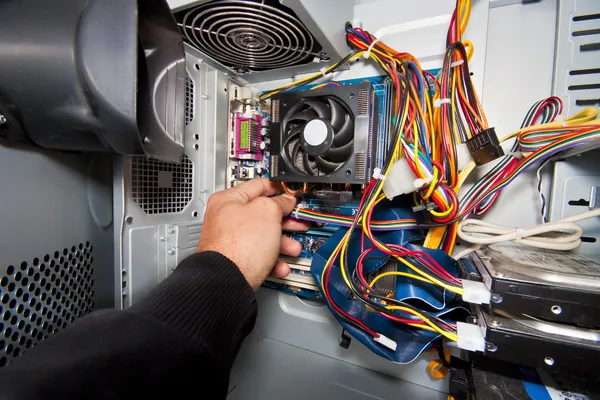A computer has moving parts fans and hard drives, to name just a couple. Those moving parts create noises, and when they become unnaturally loud, it’s time to seek computer maintenance.
Unexplainable noises, especially upon startup are an indication that you should get your PC repaired. The issue could be anything from a virus to hardware failure.
anytechsd san diego computer repair services trust their expert technicians for swift and reliable solutions to keep your devices running smoothly.
1. Your PC is Slow
A slow computer is frustrating, especially if you’re trying to get work done. Just a few minutes of lag can add up to hours or even days of lost productivity each month. Fortunately, there are a few things you can do to help speed up your computer.
First, make sure that you’re not running too many programs at startup. You can control what programs launch with your Windows computer by using the Task Manager’s Startup tab. You should also close any programs you’re not currently using as a general practice to improve computer performance.
If your computer’s speed has gotten significantly slower recently, it may be a sign of malware infection. This can include computer viruses, worms, spyware, banking Trojans and more. Fortunately, there are scanners you can use to check for and remove these threats.
2. Crashing
Having your computer crash often isn’t just annoying, it can be dangerous. You may lose important files or data and the crashing can even lead to a system failure.
One of the most common reasons for a PC to crash is overheating. The excess heat forces the computer to shut down to prevent permanent hardware damage. This can happen if the cooling system isn’t working correctly or if there isn’t enough airflow in the case.
Other causes of a computer crash include software issues or driver errors. These problems can be extremely hard to diagnose and fix. It’s best to contact a professional for any repairs that are beyond your comfort level. It is also a good idea to back up your computer before doing any work on it.
3. Making Loud Noises
When your computer starts making loud noises it’s usually a sign that something is wrong. It could be as simple as a loose screw or cable that’s rattling around inside the case. It could also be a result of overheating hardware such as your CPU, GPU, or power supply.
You can try opening your PC and blowing out the fans with a can of compressed air to make sure they’re not clogged with dust. You can also try cleaning the fan bearings with a little sewing machine oil to see if that helps.
If your PC is still making loud clicking sounds, it’s probably time to start backing up your data to an external drive or SSD, as these signs are often a precursor to hard drive failure.
4. Freezing Up
Freezing up is one of the most common problems with computers. It can be very frustrating and it is important to fix the problem as soon as possible. There are a few things you can do to troubleshoot the issue.
Software issues are often the cause of computer freezing. If the problem is caused by a software program, you can usually solve it by uninstalling or updating the program.
Another cause of freezing is overheating. To avoid this, make sure your computer has adequate ventilation and that it is not covered or obstructed in any way.
If your computer continues to freeze up, try booting it in Safe Mode or with another operating system. This can help determine if the problem is with Windows or a piece of hardware.
5. Not Working
A computer that won’t turn on can be a very frustrating problem to deal with. However, before you call for professional help, there are some things that you can try on your own first.
Start by unplugging everything that’s plugged into your computer, including USB devices and the cable that connects to the monitor. It could be that one of these is causing a power issue, which prevents Windows from loading.
Next, check the motherboard’s LEDs and listen for beeps at startup. Some motherboards emit a series of short and long beeps to indicate a specific error. If there are no beeps, consult your computer’s manual for guidance on what the problem might be. Finally, make sure that the power button cable is seated properly on the motherboard’s header.
